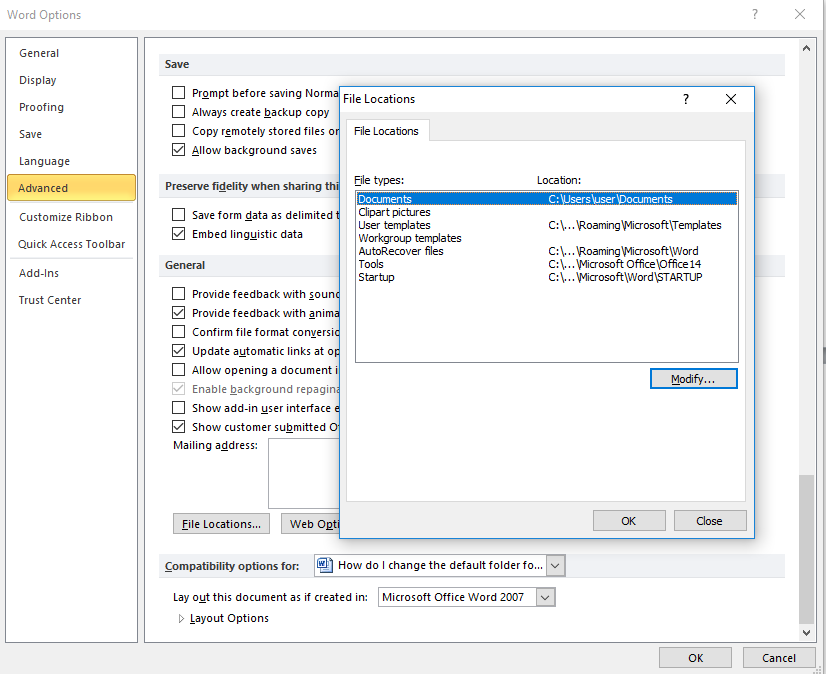
- #How to set word default settings how to#
- #How to set word default settings install#
- #How to set word default settings upgrade#
You should also remove any files from the Startup folder.

In fact, it is a good idea to look for any file that begins with the word "Normal" and then look at the filename extensions for those files to determine if you should rename them. You should make sure you rename the Normal.dotx file to a different name. If you make changes and then exit, you overwrite any resetting you did. This is because Word saves configuration information as it exits. You should remember that you cannot do "resetting" of Word while the program is running. Thus, after an uninstall, it is likely to be necessary to edit the Registry to remove the settings.
#How to set word default settings install#
However, it's not so useful for those who are looking to get a completely 'clean' install with no throwbacks to previous installs.
#How to set word default settings upgrade#
This is ideal for those who are upgrading-they get to keep their settings rather than find the upgrade overwriting them. The uninstall process does not remove all option settings stored in the Registry and many of these will be picked up after the re-install so that Word can use them. Many of the configuration settings unique to Word are stored in the Registry. This, however, will not lead to a pristine version of Word. Other suggestions may include uninstalling and reinstalling Word. While this will restore some settings to their first-used state (such as macros, toolbars, and the like), it will not do the entire trick. Many people think that the easiest way to do this is to simply allow Word to recreate the Normal.dot template. For instance, you may be offering Word training, and you want to reset Word between each class offered.
#How to set word default settings how to#

Fortunately this is a setting that can be changed, so continue reading below to find out how to set the Times New Roman font as the default option for new documents that you create. One of the more commonly preferred fonts is Times New Roman, but it may not be set as the default font in your Microsoft Word 2010 program.

It is not always easy to remember to change your font whenever you create a new document so, if you are usually creating documents for work or school, then it may be in your best interest to set the default font to the one preferred by your boss or teacher. Questions and issues with fonts are common among Microsoft Word 2010 users, as document formatting for specific institutions can vary. A good font is often a matter of personal preference, and what is preferable to one person may not be preferable to another.


 0 kommentar(er)
0 kommentar(er)
